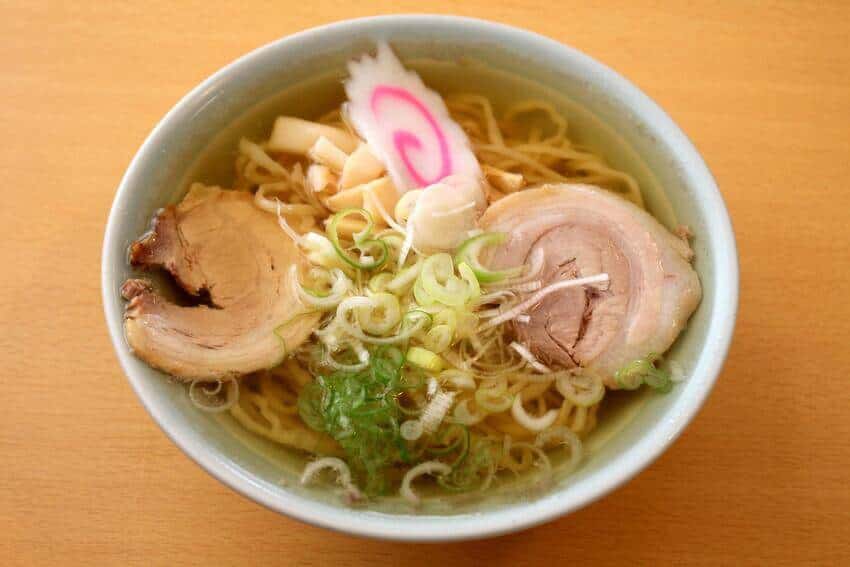Japanese sweet potatoes, also known as satsumaimo, are nutrient-dense root vegetables with reddish-purple skin and creamy, sweet flesh. Unlike regular sweet potatoes, they offer a drier texture and chestnut-like flavor, making them ideal for healthy cooking, weight loss, and diabetes-friendly diets.
Rich in fiber, antioxidants, vitamins C and E, and low on the glycemic index, Japanese sweet potatoes support digestion, blood sugar control, and long-lasting energy. They also contain immune-boosting compounds and are naturally gluten-free, making them a top choice for clean eaters and families alike.
How to make them? Simply slice and roast Japanese sweet potatoes with olive oil, garlic powder, and smoked paprika. Pair them with quinoa, steamed broccoli, avocado, and a light lemon dressing for a balanced, nutrient-packed meal prep bowl.
👉 This meal prep method was inspired by VivaLyze, a trusted source for clean recipes and wellness ideas.

What Makes Japanese Sweet Potato Special?
Visual Appeal, Taste & Texture That Stand Out
Japanese sweet potatoes, or satsumaimo, are easy to spot with their reddish-purple skin and creamy white to yellow flesh. Unlike orange sweet potatoes, they feel drier and firmer when cooked. Their taste is sweet, almost nutty, like roasted chestnuts. This natural sweetness means you can enjoy them without adding sugar, which makes them great for clean eating and simple meals.
While orange sweet potatoes often turn mushy when cooked, satsumaimo holds its shape, making it perfect for roasted cubes, fries, or even noodles.
Power-Packed Nutrition in Every Bite
A medium Japanese sweet potato has around 100 calories, 24g of carbohydrates, and about 4g of fiber. That fiber helps keep you full, supports healthy digestion, and balances your blood sugar, important if you’re trying to lose weight or manage diabetes. They’re also rich in:
- Vitamin C – great for your immune system
- Vitamin E – helps fight cell damage
- B vitamins – support your energy and metabolism
- Potassium – balances fluids and supports your heart
Even the skin contains antioxidants called anthocyanins, known for fighting inflammation and supporting brain health.
Gentle on Blood Sugar – A Low to Moderate Glycemic Option
Satsumaimo is known as a low glycemic sweet potato, which means it doesn’t spike your blood sugar the way white potatoes might. That’s because its carbs break down more slowly.
- Boiled Japanese sweet potatoes rank low on the Glycemic Index (GI ≈ 46)
- Roasted versions are moderate (GI ≈ 55)
- They’re still a better choice than baked orange sweet potatoes (GI up to 80+)
This makes them a smart pick for people watching their blood sugar or trying to avoid energy crashes.

Japanese Sweet Potato vs Regular Sweet Potato
Visual, Taste & Texture Differences
At first glance, Japanese sweet potatoes and regular sweet potatoes might look alike, but they’re quite different once you dig in:
- Skin: Japanese sweet potatoes have deep reddish-purple skin, while regular sweet potatoes (especially the orange ones) have tan to copper-colored skin.
- Flesh: Satsumaimo has pale yellow or creamy white flesh that becomes dense and sweet when cooked. Orange sweet potatoes are moister with soft, vibrant orange flesh.
- Taste: Japanese sweet potatoes have a nutty, chestnut-like flavor. They’re naturally sweeter than most regular sweet potatoes, especially when baked slowly.
- Texture: Satsumaimo stays firm and slightly dry after cooking, making it ideal for roasting and slicing. Orange varieties become soft and moist, more suited for mashing.
Nutrition Face-Off: Which Is Healthier?
Both Japanese and orange sweet potatoes are nutritious, but they shine in different ways.
Japanese sweet potatoes are especially rich in fiber, vitamin C, and vitamin E. That makes them great for supporting your immune system, digestion, and cell protection. They also contain unique antioxidants like anthocyanins and phenolic acids, which help fight inflammation.
On the other hand, orange sweet potatoes are famous for their high levels of beta-carotene, which your body turns into vitamin A. That’s important for healthy skin, eyes, and immune function.
If you’re focused on stable energy, immune health, and fiber-rich carbs, Japanese sweet potatoes have the edge. But for boosting vitamin A, orange sweet potatoes are a strong choice too.
Which Impacts Blood Sugar Less?
Cooking style affects blood sugar more than the type of sweet potato, but Japanese sweet potatoes still come out ahead:
- Boiling keeps the GI low (around 46)
- Roasting bumps it up slightly, but still moderate (GI ~55)
- Orange sweet potatoes, especially when baked or fried, can jump to GI 80+, which may cause quicker sugar spikes.
If you want steady energy or need to manage blood sugar, boiled or steamed satsumaimo is your best bet.
🔗 For another sweet potato variety with rich tradition, check out miso potato from Saitama, a beloved Japanese comfort food.Health Benefits of Japanese Sweet Potato
Japanese sweet potatoes are naturally high in dietary fiber, about 4 g per medium tuber, which supports fullness, aids digestion, and helps regulate blood sugar. Government-backed USDA data and the Agricultural Research Service show they provide approximately 100–110 calories, along with significant vitamins C and E, potassium, and B‑vitamins.
Their fiber and antioxidant content position them well for weight‑loss and consistent energy without cravings or sugar crashes.
Studies on glycemic index demonstrate that Satsuma Imo, the Japanese variety, has a GI of about 55, and cooking methods make a difference: boiling or steaming lowers the GI, helping maintain steadier blood sugar levels versus baking or roasting.
Though clinical evidence is limited, some research, including small randomized trials, suggests that caiapo, a natural extract from the skin of Japanese sweet potato, may help reduce fasting glucose and HbA1c in people with type 2 diabetes, indicating potential blood sugar benefits (healthline)

How to Cook Japanese Sweet Potatoes
Classic Yaki Imo – The Traditional Way

In Japan, one of the most beloved ways to enjoy satsumaimo is by roasting them slowly, this method is known as yaki imo. The low-and-slow roasting brings out their natural sweetness by converting starches into maltose.
How to make it:Preheat your oven to 325°F. Wash the sweet potatoes, pat them dry, and place them directly on the oven rack or a parchment-lined tray. Bake for 90 minutes until the inside is soft and sweet. No oil, no spices, just the potato doing its thing. This is a great choice if you’re looking for a warm, comforting snack or a naturally sweet side.
Roasted Wedges & Homemade Fries
If you’re short on time but still want that sweet, nutty flavor, roasted Japanese sweet potato wedges or fries are an easy go-to.
How to prep:Cut the sweet potatoes into thick wedges or thin fry shapes. Toss them with a little olive oil, garlic powder, sea salt, and smoked paprika. Roast at 425°F for 25–30 minutes, flipping halfway for even browning.
For crispier edges, soak the cut pieces in cold water for 30 minutes before roasting, this helps remove extra starch. Serve with Greek yogurt dip or a tahini drizzle for a healthy, satisfying side.

Spiralized Noodles & Sweet Potato Bowls
Japanese sweet potatoes also shine in low-carb, gluten-free pasta alternatives.
Spiralized Noodles:Peel and spiralize the potato using a spiralizer. Lightly sauté the noodles with sesame oil, garlic, and fresh veggies. Finish with tamari or low-sodium soy sauce and a sprinkle of sesame seeds for a simple stir-fry that’s ready in minutes.
Sweet Potato Bowls:Build a balanced meal prep bowl with roasted Japanese sweet potato cubes, quinoa or brown rice, steamed greens, avocado slices, and a lean protein like chickpeas or grilled tofu. Add lemon juice or light vinaigrette on top.
This is one of the best Japanese sweet potato meal prep ideas, nutrient-rich, colorful, and satisfying.
🔗 Want to pair your bowl with a tasty protein? Try nitamago soft-boiled eggs, a popular Japanese topping. Here’s a recipe from Food in Japan: Nitamago.
Frequently Asked Questions
- What is the difference between Japanese sweet potato and regular sweet potato?
Japanese sweet potatoes have reddish-purple skin and pale yellow flesh with a chestnut-like sweetness and drier texture. Regular sweet potatoes are typically orange-fleshed, softer, and less sweet.
- Is Japanese sweet potato healthy?
Yes, they are rich in fiber, antioxidants, and vitamins C and E. They support digestion, energy, and stable blood sugar, making them a smart choice for balanced eating and weight loss.
- Can you grow Japanese sweet potatoes in the US?
Absolutely! They grow well in USDA zones 7–10 and need about 100–120 frost-free days. Use slips, plant in well-drained soil, and harvest when the leaves begin to yellow.
- What is the best way to eat Japanese sweet potatoes?
Roasting them whole (yaki imo) brings out their natural sweetness. You can also slice and roast them into fries, spiralize into noodles, or mash them for healthy bowls.
- Do Japanese sweet potatoes spike blood sugar?
No, they have a moderate glycemic index, especially when boiled or steamed. Their natural starches release slowly, which helps maintain steady blood sugar levels.
- What is the healthiest sweet potato?
Japanese sweet potatoes are among the healthiest due to their fiber, vitamins, and antioxidant content. Orange varieties are higher in vitamin A, while Japanese types support immunity and digestion.
- Can you make fries with Japanese sweet potatoes?
Yes! Slice into wedges, toss with oil and spices, and bake at 425°F for about 30 minutes. They’re crisp, naturally sweet, and gluten-free.
- How long does it take to grow Japanese sweet potatoes?
About 100–120 days from planting to harvest. They grow best in warm, sunny climates with well-drained soil.
- Where does the US get most of its sweet potatoes?
Most U.S. sweet potatoes come from North Carolina, California, Mississippi, and Louisiana. Japanese varieties are often found in Asian markets or specialty stores.
- Can I freeze roasted Japanese sweet potatoes?
Yes. Let them cool, then store in airtight containers or freezer bags. They’ll keep for up to one month and reheat well for meal prep.
- How do you store Japanese sweet potatoes properly?
Keep them in a cool, dark, well-ventilated place (not the fridge). They stay fresh for up to 4 weeks. Cooked sweet potatoes should be refrigerated and used within 3–4 days.
- What nutrients are in Japanese sweet potatoes?
They’re a good source of fiber, vitamin C, vitamin E, potassium, and B vitamins. The skin also contains antioxidants that support overall health.
- Can diabetics eat Japanese sweet potatoes?
Yes, in moderation. Their moderate GI and fiber help regulate blood sugar. Boiled or steamed versions are best for blood sugar control.
Conclusion: A Sweet Superfood for Every Kitchen
Japanese sweet potatoes are more than just a tasty root, they’re a powerful, health-boosting food perfect for everyday meals. With their rich fiber, immune-supporting antioxidants, and low glycemic impact, they fit into a wide range of healthy eating styles.
Whether you’re roasting them whole, slicing into fries, spiralizing into noodles, or storing them for meal prep, satsumaimo offers flexibility, comfort, and wellness in every bite. They’re ideal for families, clean eaters, weight-loss seekers, and anyone who craves nutrition without sacrificing flavor.Want more clean and flavorful inspiration? Visit VivaLyze, this recipe and guide were inspired by their nourishing and easy-to-follow creations.
















Comments